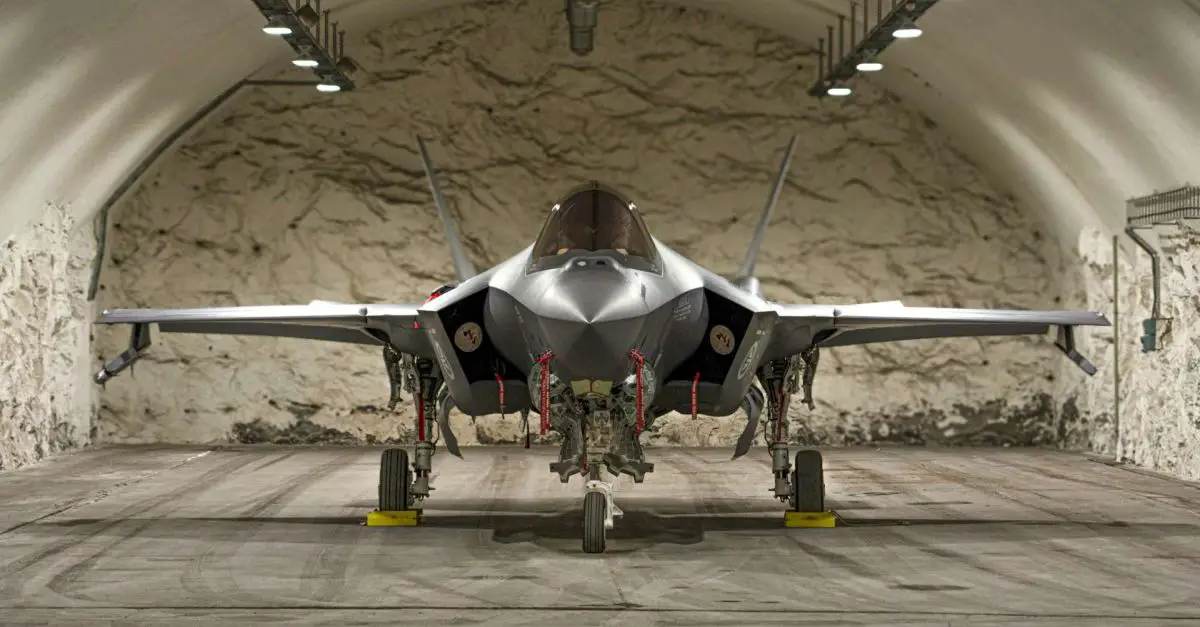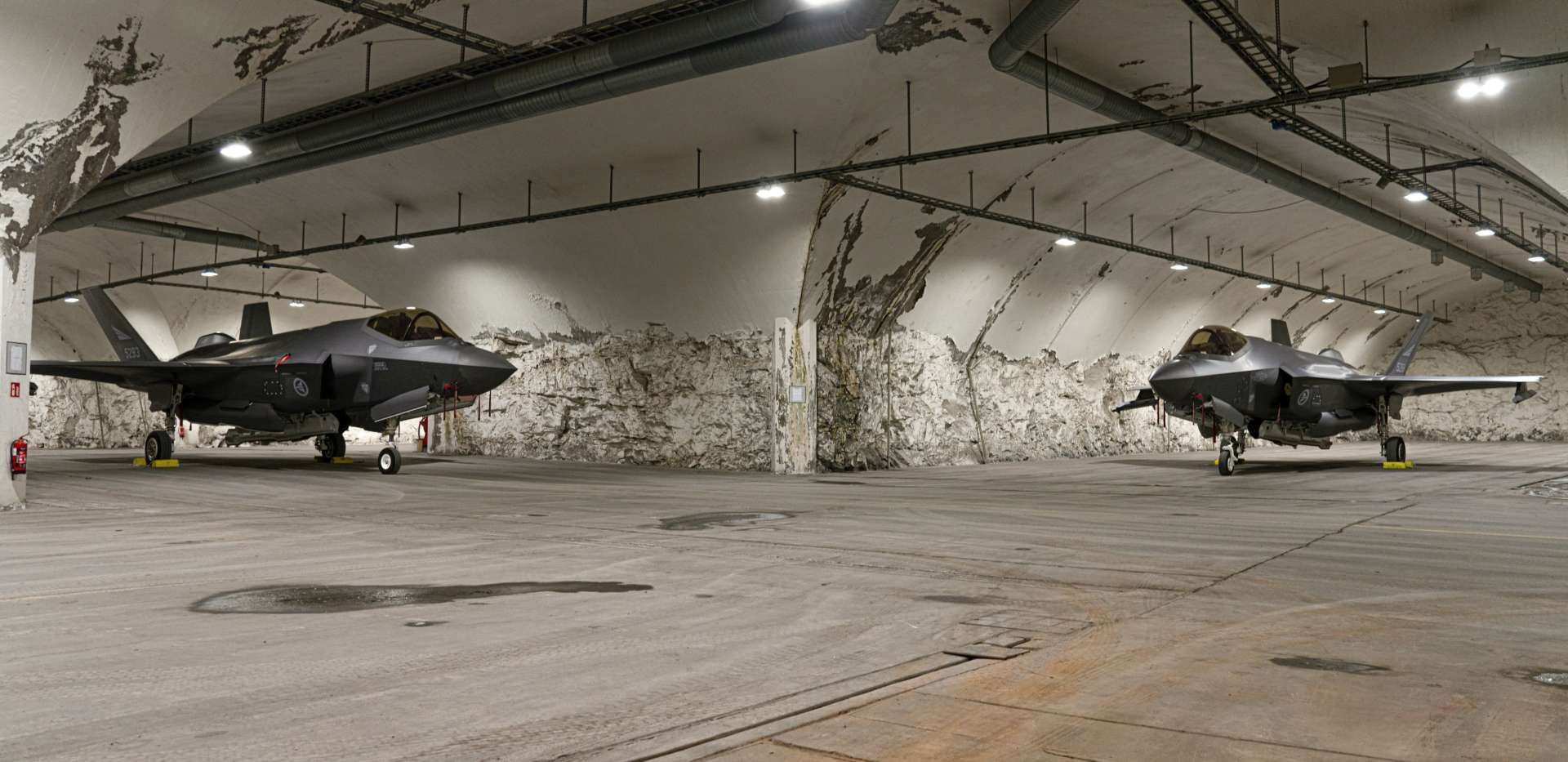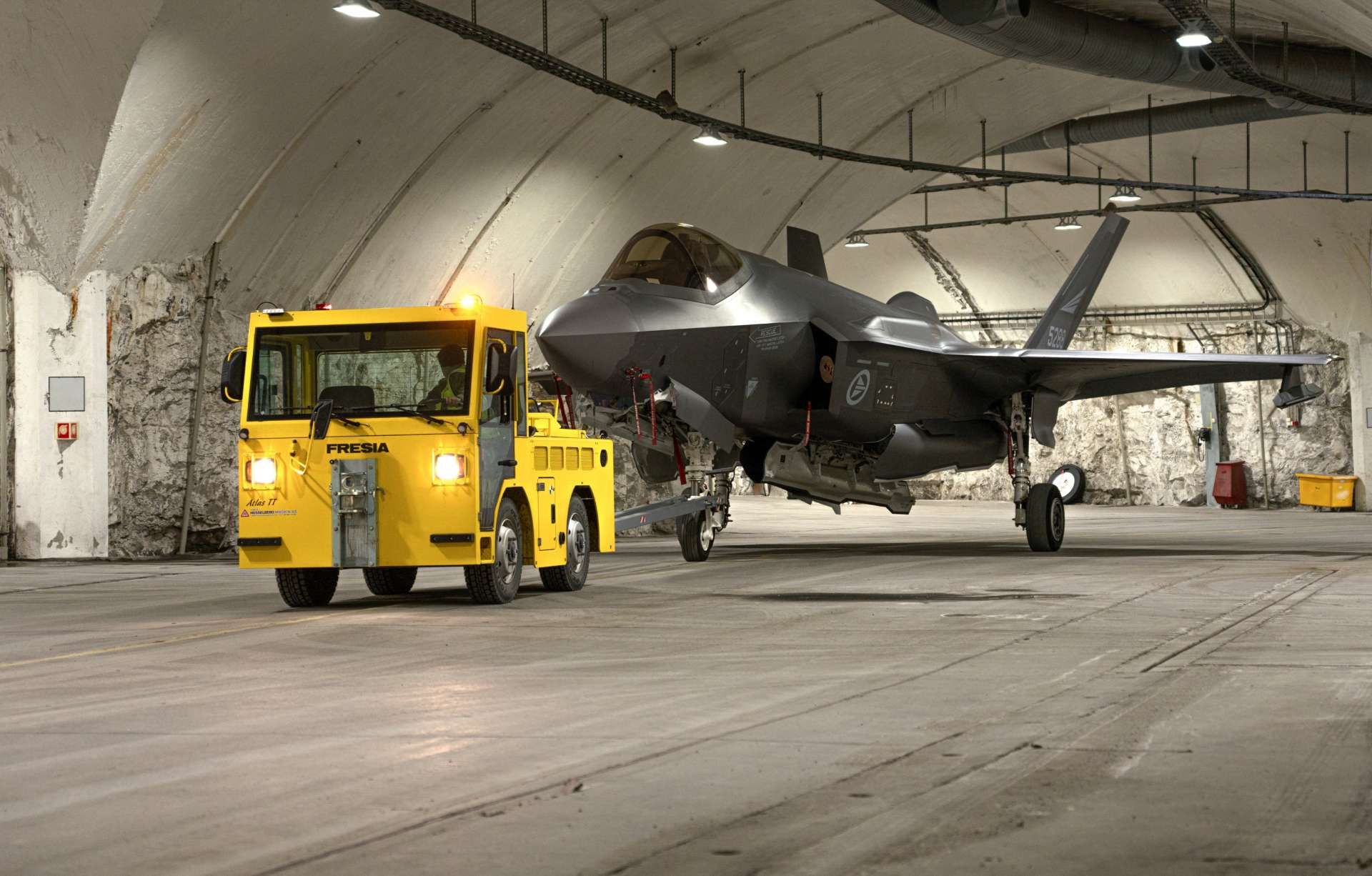Breaking News
Norway reactivates Bardufoss Air Station after 40 years for F-35s.
On June 19, 2024, the Royal Norwegian Air Force reactivated Bardufoss Air Station, allowing F-35 fighter aircraft to utilize mountain hangars and facilities that had been inactive for 40 years. This reactivation, which took place in mid-June, is part of Norway’s ongoing efforts to develop national operational concepts and enhance the survivability of its combat aircraft. The decision to reactivate Bardufoss Air Station was influenced by the need to disperse aircraft and operate from various locations across Norway and the broader Nordic region during times of crisis.
Follow Army Recognition on Google News at this link

Bardufoss Air Station, which opened in 1938, is Norway's oldest operating air station and is part of the Norwegian Air Force’s 131 Air Wing. (Picture source: Norwegian Air Force)
Bardufoss Air Station’s natural terrain provides protection for combat aircraft, including the fifth-generation F-35 jets. The mountain hangar has been upgraded both structurally and with new equipment to support air operations. In the long term, this development is expected to lead to increased national and Allied fighter aircraft activity in Northern Norway around Bardufoss.
Brigadier Tron Strand, head of the Norwegian Joint Air Operations Centre, emphasized the strategic importance of Bardufoss Air Station in the development of Norwegian, Nordic, and Allied air power. NATO's Agile Combat Employment (ACE) concept, which focuses on improving the resilience and survivability of air operations through dispersal and rapid movement of air forces, is a key element of this strategy. Brigadier Strand noted that the deteriorating security situation and the war in Ukraine necessitate a more prepared Air Force. Even advanced stealth fighters, despite their capabilities, are vulnerable when on the ground. Therefore, the Air Force must be capable of dispersing its combat aircraft and operating out of multiple airports and air stations, both in Norway and the Nordic countries, if required by a crisis or war. Utilizing available mountain facilities for protection is essential. As part of Norway’s national operational distribution concept, the entire air station at Bardufoss is being utilized, which may involve increased national and Allied activity over time.
Bardufoss Air Station, which opened in 1938, is Norway's oldest operating air station and is part of the Norwegian Air Force’s 131 Air Wing. Colonel Eirik Stueland, commander of the 131 Air Wing, emphasized that Bardufoss, with its dual role as both a military and civilian airport, is well-suited for a significant role in the operational distribution concept. The objective is to utilize all available airports throughout the Nordic region; at Bardufoss, the existing infrastructure enables it to play a larger role in the initial mobilization phase, including supporting Allied deployments.
Agile Combat Employment (ACE) is a NATO operational concept designed to enhance the resilience, survivability, and effectiveness of air forces through a flexible and dispersed basing strategy. This initiative aims to mitigate risks associated with concentrated force deployment by enabling air combat power to be generated from both main and geographically dispersed locations, including austere and non-standard bases. Core principles of ACE include agility, interoperability, survivability, continuity of air operations, and operational readiness.

Norway's Royal Norwegian Air Force currently operates 10 F-35s used for training Norwegian pilots in the US, with 37 delivered to Norway for testing and integration out of a planned total of 52. (Norwegian Air Force)
Agility in ACE emphasizes the rapid and flexible movement of forces, enabling quick responses to emerging threats and changing operational environments. This includes the ability to reposition aircraft and support elements swiftly to maintain operational momentum. Interoperability requires seamless cooperation between NATO allies and partners, involving the standardization and integration of equipment, weapons, and communication systems to ensure effective joint operations. Survivability is enhanced by dispersing forces across multiple locations, including implementing dynamic basing strategies and physical protection measures to safeguard air assets. Continuity of air operations ensures that air activities can continue uninterrupted in dynamic and contested environments. Operational readiness involves forces being prepared to respond to threats with minimal notice, achieved through rigorous training, planning, and the development of multi-capable airmen who can perform various tasks under austere conditions.
ACE has been integrated into various NATO exercises to validate and refine its operational concepts. Exercises like the USAF's "Exercise High Life" in 2021 and "Astral Knight" have demonstrated the viability of dispersed operations and the effectiveness of multinational participation. Real-world applications, such as NATO's Enhanced Air Policing missions on its Eastern Flank, have also highlighted ACE's effectiveness. Innovative tactics such as hot-pit refueling, which allows aircraft to refuel without shutting down engines, further enhance operational efficiency.
However, implementing ACE faces challenges, including the need for suitable base archetypes for adaptive basing and the development of advanced expeditionary skills among airmen. The Multi-Capable Airmen (MCA) initiative addresses these challenges by training personnel to perform multiple roles, reducing the logistical footprint, and enhancing operational flexibility. Highway operations and the use of strategically located civilian airports are among the solutions being explored to overcome infrastructural limitations, ensuring a robust and responsive air presence even if primary bases are compromised.
Norway's Royal Norwegian Air Force currently operates 10 F-35s used for training Norwegian pilots in the US, with 37 delivered to Norway for testing and integration out of a planned total of 52. In November 2019, Norway declared initial operating capability (IOC) status for its F-35s, and in January 2022, the F-35s took over responsibility for the QRA-readiness previously held by the F-16. Full operational capability (FOC) is expected in 2025. The main air stations at Ørland and Trøndelag host the 331 and 332 Skvadron units, respectively.
The F-35 Lightning II, primarily developed by Lockheed Martin, is a fifth-generation multirole combat aircraft designed for a variety of military operations, including air-to-air, air-to-surface, and electronic warfare. The aircraft features advanced stealth technology to reduce its radar cross-section, enhancing its survivability in hostile environments. It is equipped with integrated electronic systems such as the Electro-Optical Targeting System (EOTS) and Distributed Aperture System (DAS), which improve reconnaissance, situational awareness, and missile defense capabilities. Powered by a Pratt & Whitney F135 engine, the F-35 can reach a maximum speed of approximately Mach 1.6. It has internal bays capable of holding various munitions, including AIM-120C air-to-air missiles and GBU-32 JDAM guided bombs, and a standard weapon capacity of over 18,000 pounds, expandable to 22,000 pounds in "beast mode." The aircraft's stealth features and advanced systems contribute to its effectiveness in modern air combat scenarios.

The F-35 Lightning II, primarily developed by Lockheed Martin, is a fifth-generation multirole combat aircraft designed for a variety of military operations, including air-to-air, air-to-surface, and electronic warfare. (Norwegian Air Force)


























